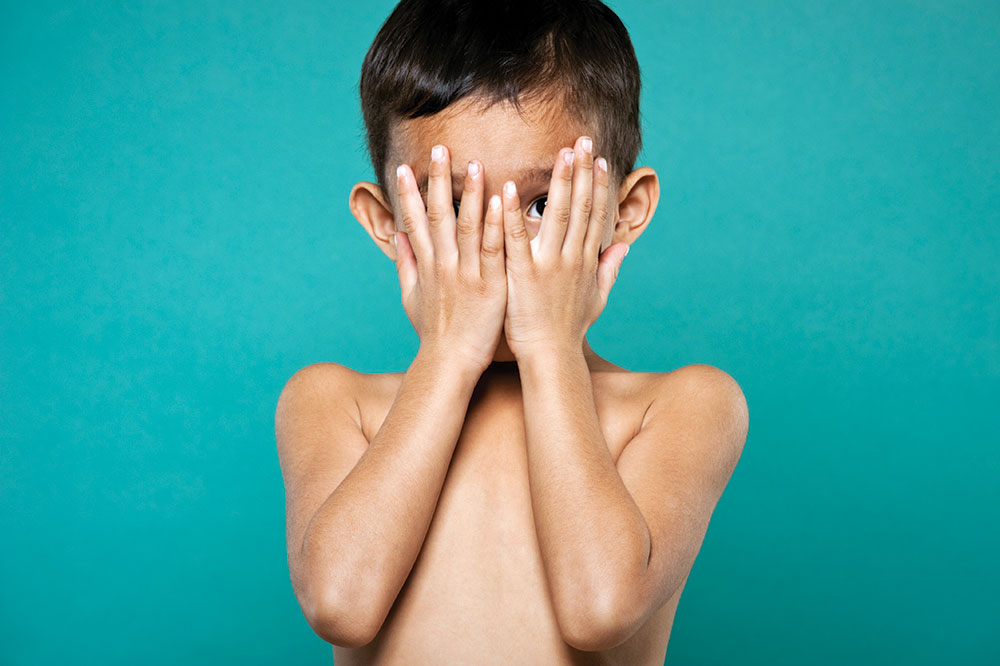
Sleepless nights are a parent’s rite of passage, as is feeding a finicky eater. But for parents of kids with sensory processing disorder (SPD), these moments can escalate from common to catastrophic.
“My daughter couldn’t fall asleep by herself. We were completely sleep-deprived for 18 months,” says Carrie Fannin of Seattle. “She [would] eat hardly anything with texture, and transitioning from one activity to the next resulted in monumental meltdowns.”
A pediatric neurologist diagnosed Fannin’s daughter, Hayley, with moderate to severe SPD when she was 6 years old.
Children with SPD have difficulty interpreting and responding to sensory input acquired from both internal and primary senses, including hearing, sight, smell, taste and touch. The brain either overreacts or underreacts to stimuli. A 2013 University of California–San Francisco study concluded that SPD affects 5 to 16 percent of school-age children.
“Putting on socks became a four-hour event,” Fannin recalls. “I sat up at 3 in the morning feeling like she would never ride a bike, never graduate from high school, never drive a car.”
Today, Hayley is an independent 20-year-old college student with a job. And her mom is the founder of Sensory Planet (sensoryplanet.com), a networking site that helps connect parents with each other, resources and hope.
What is sensory processing disorder?
Imagine a light tap on the shoulder. For a child with SPD, the reaction can vary from not noticing at all to feeling assaulted.
“Sensory processing disorder is difficulty identifying, interpreting and responding to sensory input,” says Lucy Jane Miller, Ph.D., founder of the STAR Center, an SPD therapy and research institution in Denver, Colorado, and author of the revised edition of Sensational Kids: Hope and Help for Children with Sensory Processing Disorder.
“Underresponsiveness means a child responds too slowly or not enough. They can fall during field day, cut their knees and be bleeding. However, they may not feel it, stand up and keep running,” Miller says. “For an overresponsive child, something as simple as a breeze on their neck can induce a sense of danger and panic.”
A third manifestation is sensory craving, which Miller describes as constantly seeking input: feverish movement, nonstop talking and an inability to keep their hands to themselves. “Those three together form a pattern,” she explains. “The information comes in, and children cannot regulate how their brains respond.”
SPD impacts lesser-known internal senses, too. Vestibular input, or movement, comes from the inner ear and impacts abilities such as balance and coordination. Proprioception, or awareness between separate parts of the body, originates in the muscles and joints. It’s responsible for such actions as being able to touch one hand to the other with your eyes closed.
Miller adds an eighth sense, interoception, to the list. It refers to internal sensations, such as hunger or a stomachache.
In search of diagnosis
“It took a long time and continued persistence on my part to receive a diagnosis,” Fannin says. “Hayley was meeting so many developmental milestones that my concerns were being brushed off by doctors.”
Many children are either misdiagnosed or not diagnosed at all. According to Miller, a heightened reaction is often mistaken for ADHD, and a lacking response may be seen as autism. Detection is also inconsistent because SPD has yet to appear in the American Psychiatric Association’s Diagnostic and Statistical Manual of Mental Disorders, the official standard for diagnosis and treatment. “This is a very real diagnosis, though,” Miller says.
Portland, Ore., resident Ben Cavalcanti and his wife noticed that their newborn resisted sleep and rarely made eye contact. But it wasn’t until their now 5-year-old son was expelled from two preschools that the first-time parents became aware of his special needs.
“Circle time — story reading — was particularly difficult. He’d get swept away in the chaos of play and couldn’t settle down to sit and listen,” Cavalcanti says. “We took on guilt as parents of what we were doing wrong. I’m sure it also affected him, wondering why he was kicked out.”
Children are frequently diagnosed after leaving home for the first time to attend day care, preschool or kindergarten. Without constant parental supervision, problems become more unmanageable. Another influx of diagnoses occurs around third grade due to educational acceleration, Miller says.
Methods of treatment
Cavalcanti begin researching symptoms and connected with Portland-based Sensory Kids, a clinic specializing in SPD occupational therapy (OT).
“Early intervention is important. The sooner you get into treatment, the more impact you’ll see. I’ve treated infants under 2 months old,” says Lisa Porter, who founded Sensory Kids in 2009.
In addition to her OT background, Porter trained at Denver’s STAR Center, which promotes a “smart-play method.” Both Sensory Kids and STAR work with children in a playground-style gym environment. Through hands-on activities, kids learn to identify triggers, develop coping strategies, identify emotions and regulate reactions.
“We also spend a lot of time talking about differences and how everyone has them,” Porter says. “A main focus is self-esteem, because SPD takes a toll on kids. They often struggle to relate to their peers and miss out on attending birthday parties and childhood activities.”
For maximum benefits, both Miller and Porter recommend multiple sessions weekly. At STAR, one out of every five treatments focuses on parent-only education.
“My relationship with my son is so much better. Before, my first reaction was to be punitive and stern. Now I understand [better] what he’s experiencing, and I have the tools to work with him.”
— Dad Ben Cavalcanti
“My relationship with my son is so much better,” Cavalcanti says. “Before, my first reaction was to be punitive and stern. Now I understand [better] what he’s experiencing, and I have the tools to work with him.”
He and his wife now communicate more clearly with their son, preparing him for transitions between activities and ensuring that he always has access to a calm space. They carefully selected a kindergarten that will accommodate his needs.
Cavalcanti admits it’s often still “two steps forward, one step back,” but things have improved. At Sensory Kids, 150 tiles painted by kids decorate the walls. The Cavalcanti tile boasts a brightly colored bunch of balloons floating into the sky.
“I’ve found that people will only be what they’re labeled to be,” Cavalcanti says. “If [children are] allowed to pursue their full potential, they’ll rise up and soar.”











